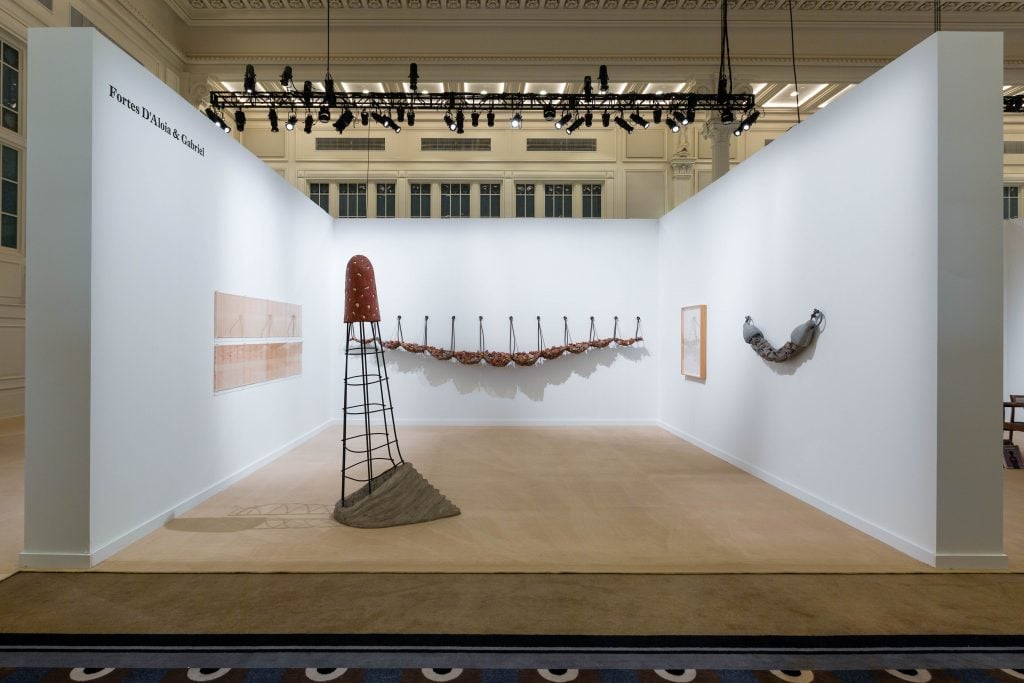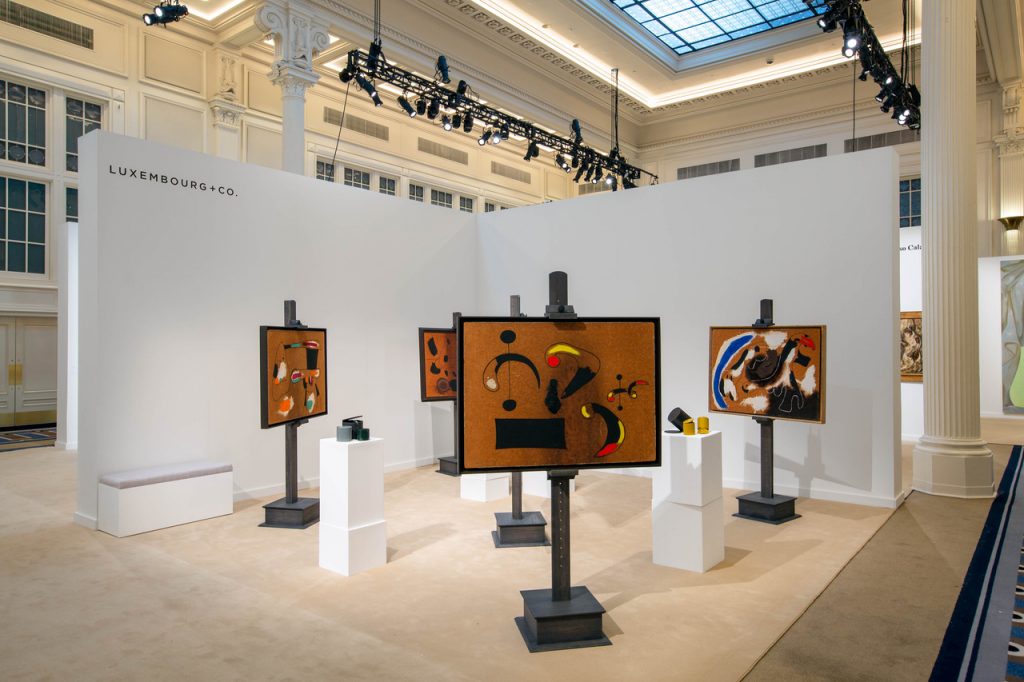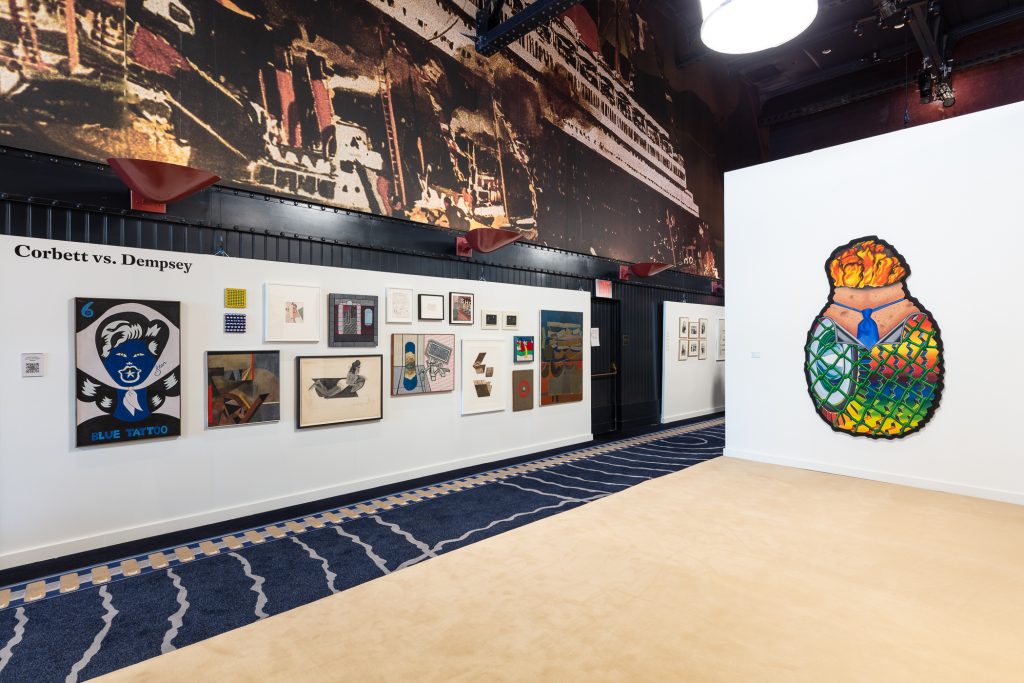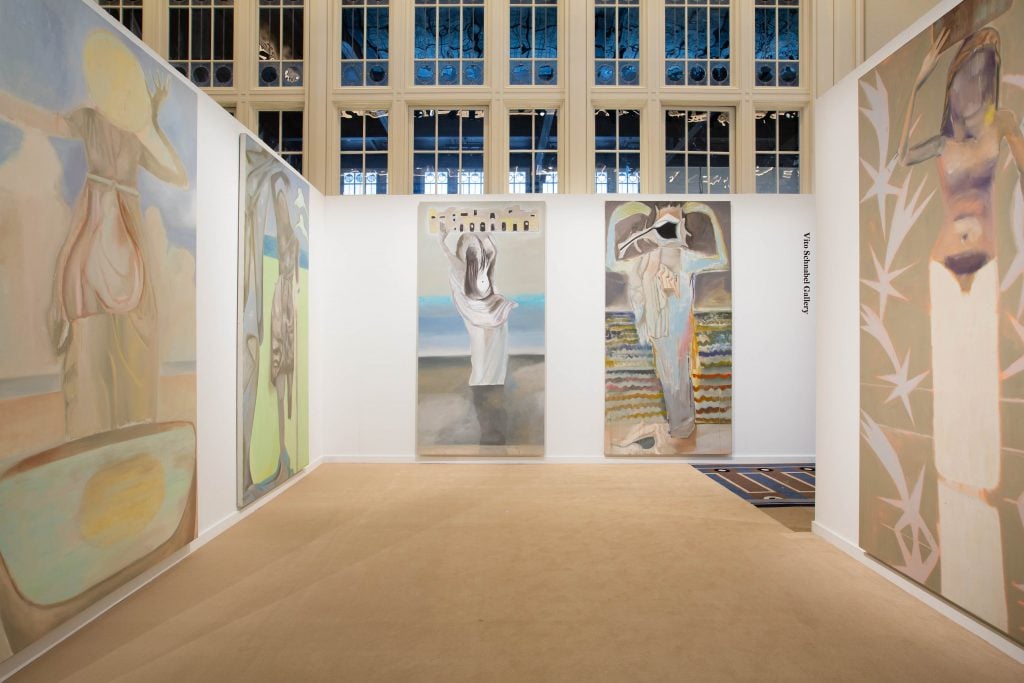Last year, Independent New York launched the inaugural edition of its sister fair, Independent 20th Centuryheld at the Battery Maritime Building in downtown New York, highlighting art and artists from 1900-2000.
The fair stands out both for its manageable size compared to the vast mega fairs that dominate the art world calendar, but also for the fact that its fundamental objectives go far beyond simply selling art. “We’re much more interested in the conversations that start at the Independent, and then one, five, 10 years later, seeing where those conversations go,” said Matthew Higgs, founding Conservative adviser to the Independent. “The Independent show is still primarily focused on the new, the recent, and the 20th century. Independent gives us the opportunity to think about the recent past in this 20th century frame, trying to reframe it, trying to complicate the timeline itself. even. We hope that the fair will evolve, that more galleries will participate, and that the real goal is to initiate conversations that may have never happened before or may not necessarily have happened that way.
One of those conversations revolves around the term “contemporary” as it relates to art, which has become something quite fluid in recent years; referring both to what is happening today, it also increasingly encompasses much of the art made in the 20th century, and what could arguably be considered historical.
“If we look at the way most institutions, especially contemporary art institutions, program, what we find is that a lot of the material they show us is essentially historical. And then we saw commercial galleries start representing artist estates – if you look at, say, 20 years ago very few contemporary art galleries were doing that. And now, artists’ estates are pretty much represented in all contemporary art galleries. So this kind of porous, elastic idea of the historical and the contemporary, I think, has become more and more interesting,” Higgs said.

Installation view of ‘Ivens Machado’, Fortes D’Aloia & Gabriel at Independent 20th Century, New York (2022). Photo: Alexa Hoyer. Courtesy of Fortes D’Aloia & Gabriel, São Paulo/Rio de Janeiro.
On why they chose to participate in the inaugural edition of Independent 20th Century, Marcia Fortes said, “with the fair being smaller with fewer galleries, more historic, and the proposal to feature only artists from 20th century, it sounded perfect because we are not a gallery focused on the field. It’s kind of a niche in our program, but we’ve taken representation from three areas in the last year and are working with four areas in total. Independent 20th Century has this nice balance between contemporary and historical programs in terms of galleries, and it really seemed like the perfect context for us to showcase the estate of late artists that we had taken on the responsibility of representing.
For the inaugural edition, the Fortes gallery Fortes D’Aloia & Gabriel presented the work of the Brazilian artist Ivens Machado, and for the next fair will present the work of Wanda Pimentel, an artist who was an influential figure in the Brazilian new figuration movement, a movement strongly influenced by pop art. As one of the few participating female artists, her work and practice is an integral, if sometimes overlooked, part of the canon of 20th century art. The reassessment of the canon comes up regularly in art world discourse – particularly in the context of major art fairs – but often as a secondary or even tertiary theme. But at Independent 20th Century, it’s part and parcel of the fair’s ethos, and part of a larger conversation that participating galleries have been keen to engage with, and part and parcel of understanding and reconsidering the contemporary art as a whole.

Installation view of “Joan Miró with Peter Fischli”, Luxembourg & Co. at Independent 20th Century (2022). Courtesy of Independent New York.
In the art world in general, particularly at the level of museums and institutions, the boundary between historical art and contemporary art is often perceived as sharp; partly for practical reasons, but also partly because of preconceived ideas about what prevails or influences today. In the context of the independent 20th century, however, historical art and art history should not simply be viewed as an immutable artefact or narrative, but rather as something to engage with, build upon, develop.
“There has always been a connection between what artists have done in the past and what artists are doing today, and there has always been a certain danger in worshiping the past. There’s nostalgia, but also a tendency to look at everything that’s been done before as this kind of unique and amazing thing, and then forget how much of an influence that has on what’s happening today,” said declared Alma Luxembourg.
During the 2022 iteration of the fair, Luxemburg & Co. showed a series of Masonite paintings by Joan Miró in dialogue with works by Peter Fischli. Both historical and contemporary, the presentation offered a guideline that linked the historical to the contemporary.
“With our shows, we aim to have a specific focus and point of view. And, like the fair, look at artists who may not have had as much attention or even specific moments in the careers of very famous artists that deserve a second look, like we did with the paintings by Miro Masonite. These are all paintings that were made in 1936, at a very precise moment, and which were not the best known or the most explored of his work… with the work of Fischli, these two artists would perhaps not be not necessarily be put in the same line, but there are commonalities and a continuation in contemporary practice of the revolutionary and modernist heritage, which are interesting to explore.

Installation view of ‘Before and After Imagism’, Corbett versus Dempsey at Independent 20th Century (2022). Photo: Silvia Ros. Courtesy of the artists and Corbett vs. Dempsey, Chicago.
Through lines and dialogues between past and present, not only offers collectors, curators and general fair visitors an invaluable opportunity to analyze preconceived notions of past and present, historical and contemporary, but also spotlights art and artists that have not been given due or warranted attention.
“The past few decades have been marked by an awareness of how much has been omitted from the canon. There has been a strong trend of rediscovery, reconsideration and recasting both specifically and more generally, at all levels. I think it’s now part of the discourse on contemporary art. When you talk about contemporary art, you’re not just talking about what’s happening right now or what’s been going on for 10 or 20 years, you’re really also talking about how what’s happening right now affects everyone new discoveries in terms of reshaping our sense of the historical continuum,” said John Corbett of Corbett vs. Dempsey Gallery.
Last year, Corbett vs. Dempsey presented “Before and After Imagism,” a selection of works by the Chicago Imagists, a group of mid-century artists working largely in figurative and figurative styles. The Chicago Imagists and artists working alongside them did not receive the same critical attention as their contemporaries working in New York’s abstraction-centric art world, but the presentation at Independent 20th Century offered some insight. contextualized from the dynamic and influential artistic milieu. of time and place. In September, the gallery will showcase the work of Cuban-American artist Emilio Cruz, an important contributor to American modernism whose work is rightly coming back into the limelight.

Installation view by Francesco Clemente, Galerie Vito Schnabel at Independent 20th Century (2022). Courtesy of Independent New York.
Ahead of the second edition coming in September, Independent 20th Century promises both to continue the dialogues begun in the first iteration, as well as new insights into the canon’s platform and an expanded understanding of contemporary art.
“With Independent 20th Century, we thought about how we could create a platform that encompassed all of these different ideas and how work that might previously have been considered art historical could actually resonate in the present. a totally different way. This is what we attempted to do in the first edition of Independent 20th Century and as the fair goes on accumulating other editions, we hope it will become an increasingly interesting and complicated story. I certainly think that this unraveling of the contemporary is really, probably the most dominant and important idea in the art world of the last decade,” Higgs said.
Independent 20th Century is open from September 7 to 10, 2023.
Follow Artnet News on Facebook:
Want to stay one step ahead of the art world? Subscribe to our newsletter to receive breaking news, revealing interviews and incisive reviews that move the conversation forward.
